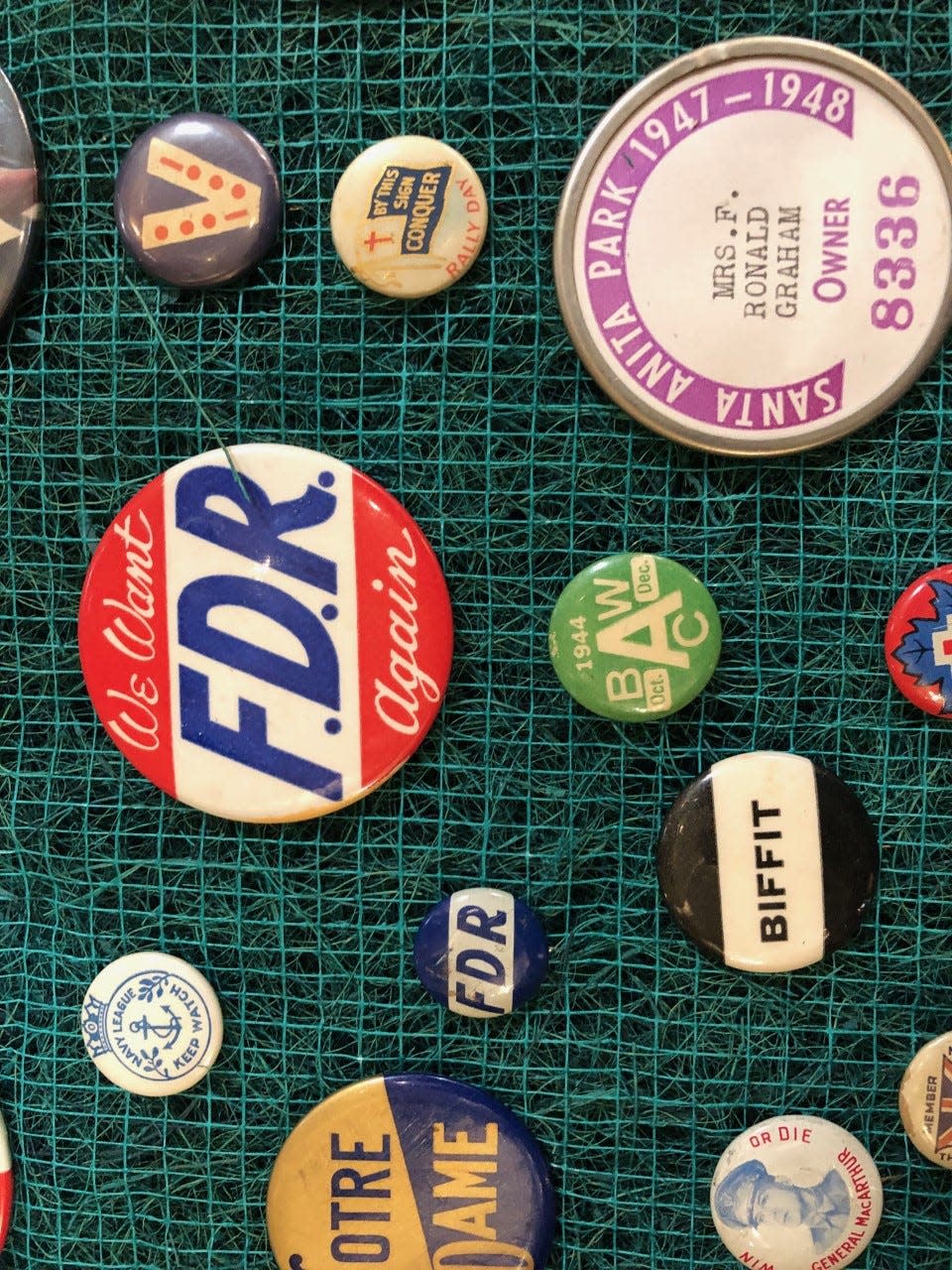Antiques: Only the buttons remain

- Oops!Something went wrong.Please try again later.
So all the votes have now been counted and the political campaign season is finally over (except maybe for a few lawsuits). The hats, the banners, the signs: all gone. However, the few bits of political flotsam that always seem to avoid the dumpster are metal campaign buttons. Such buttons have a storied history in the American political system, immortalizing both winners and losers in our great Democratic process. There's never room to say much on a campaign button, so you have to say it with brio. And if your candidate loses at the polls, you can always gaze wistfully at his or her button and dream about what might have been. Let's explore.
While campaigns buttons as we know them today didn't appear widely until the 1896 presidential election, pins and ribbons have served as political bling since the time of George Washington. Supporters of Washington wore pins with a cryptic "GW" inscription, often mated with a ribbon spouting "Long Live the President." Imagery on pins didn't appear until Abraham Lincoln's time when advances in photography allowed for a crude visage of the 16th president to be imprinted. It took another 35 years but buttons were suddenly everywhere during the hard-fought presidential campaign between William McKinley and William Jennings Bryan. And that was because the New Jersey firm of Whitehead & Hoag had just patented an affordable pin-back celluloid button, making them available to anyone with even a modest campaign chest. Not surprisingly, those early buttons are catnip to collectors.
As the years went by, the use of buttons trickled down to state and local levels but presidential buttons remain the most widely sought. In 1951 when Dwight Eisenhower was being pressed to run for president, the former five-star general played it coy and refused to commit to either party. As a result, his supporters came up with the noncommittal "I Like Ike" slogan that fit nicely on a button without any party affiliation. Ike won handily in 1952 and again in 1956, prompting a shift towards personality marketing and away from party dogma. JFK's win in 1960 was a further example of that trend.
Enter the zany 1960s, and campaign buttons became more expressive. The free spirits of the era made their own buttons, some accusatory and others profane, that rarely achieved wide circulation but today are coveted by enthusiasts. Buttons both for and against such candidates as Eugene McCarthy, George McGovern, and Richard Nixon were among the most colorful. Issues such as the Vietnam war also generated their share of buttons, many incorporating the circular peace sign developed by Gerald Holtom in 1958. Holtom's original cause was nuclear disarmament and his symbol was meant to be a stylized image of the semaphore symbols for "N" and "D."
So, there you have it. Today's cost-conscious campaigns tend to utilize more stickers than buttons so their use in political settings has declined significantly. Virtual internet or web buttons have also overtaken the real thing. All the same, desktop publishing has allowed even the smallest campaigns to print buttons and some continue to do so with gusto. Interestingly, Canadian campaign buttons are not nearly as common as those from the USA and thus have found a growing niche among collectors. Galleries like ours often have wide assortments of buttons spanning 20th century politics, and they rarely cost more than a few dollars apiece. Collecting them won't make you a beltway insider, but that may not be a bad thing.
Mike Rivkin and his wife, Linda, are longtime residents of Rancho Mirage. For many years, he was an award-winning catalogue publisher and has authored seven books, along with countless articles. Now, he's the owner of Antique Galleries of Palm Springs. His antiques column appears Sundays in The Desert Sun. Want to send Mike a question about antiques? Drop him a line at info@silverfishpress.com
This article originally appeared on Palm Springs Desert Sun: Antiques: Only the buttons remain

